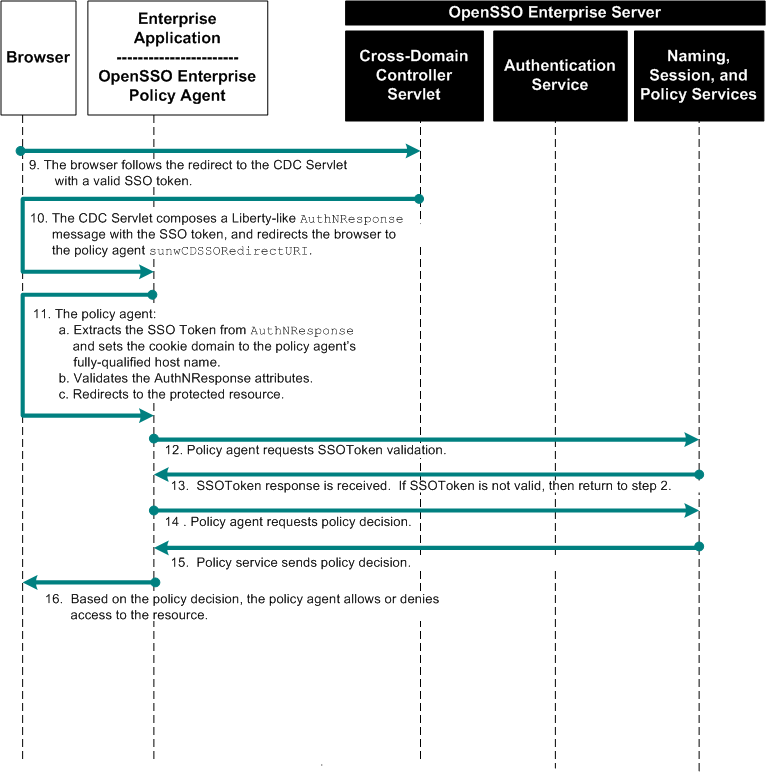The Policy Agent's Role in CDSSO
The Java EE Policy Agent's Role
Based upon the appropriate HTTP protocols, an SSO token is presented to servers in the DNS domain that is set in the cookie. A server may only set a cookie within their own domain. So despite having a valid SSO token cookie in one domain, policy agent-protected servers in other domains are never presented with this cookie.
CDSSO overcomes the problem with coordinated work between two components:
-
Cross-Domain Controller (CDC) servlet on the OpenSSO Enterprise server: http(s)://opensso_host:port/opensso/cdcserlvet
-
CDSSO Redirect Servlet on the Java EE policy agent
http(s)://agent_host:port/agentapp/sunwCDSSORedirectURI
The CDSSO Redirect Servlet extracts the SSO Token sent by the CDC Servlet, and then sets the same SSO Token cookie again. This time the SSO Token is set with the policy agent's fully qualified host name as the cookie domain. This process essentially replicates the SSO Token in the policy agent DNS domain from the OpenSSO Enterprise DNS domain. The following figure illustrates the CDC servlet and CDSSO Redirect Servlet process flows.
Figure 16–2 Process flow for CDC Servlet and CDSSO Redirect Servlet

Figure 16–3 Process flow for CDC Servlet and CDSSO Redirect Servlet (continued)

The Web Policy Agent's Role in CDSSO
The Web Policy Agent works similarly as the Java EE Policy Agent except for a slight variance. No CDSSO Redirect Servlet exists on the web policy agent because the agent is an NSAPI plug-in. As a result, the web policy agent combines the above steps 11 through 13 into a single step with no redirection.
- © 2010, Oracle Corporation and/or its affiliates
